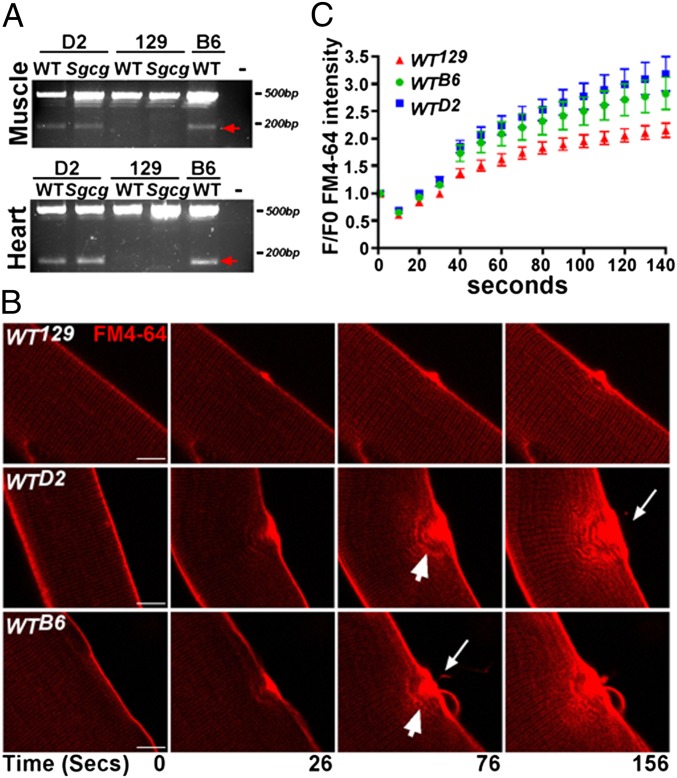Fig. 3.
The presence of ANXA6N32 correlates with increased laser-induced membrane damage and slower membrane repair. (A) The D2 and B6 inbred strains of mice share a haplotype distinct from 129 in the chromosome 11 region of Anxa6. B6 mice also carry the SNPs that produce the Anxa6 alternative splice form. RT-PCR was performed on abdominal muscle and heart samples. In abdominal muscle, the alternate product is detected in only D2 and B6 samples (red arrows). The expected PCR product from full-length Anxa6 at ∼500 bp is detected in all samples. The same results are seen in heart tissue (Lower). (B) To assess sarcolemmal damage and repair, laser damage was induced in the presence of a lipophilic dye FM4-64. FM4-64 fluorescence increases until membrane resealing is complete. Damaged WT129 myofibers had minimal FM4-64 influx at 156 s after laser induced membrane disruption. WTD2 and WTB6 myofibers, both of which express endogenous Anxa6′ splice form, had dramatic FM4-64 dye influx during the same time after injury (156 s, arrowheads). FM4-64 extravasation was also detected in WTD2 and WTB6 fibers (white arrows) consistent with ineffective and inefficient membrane repair. (Scale bar, 5 µm.) (C) The amount of FM4-64 entry into myofibers was quantified after laser damage. Fibers from the 129 strain resealed more efficiently than those from the D2 or B6 strains.

